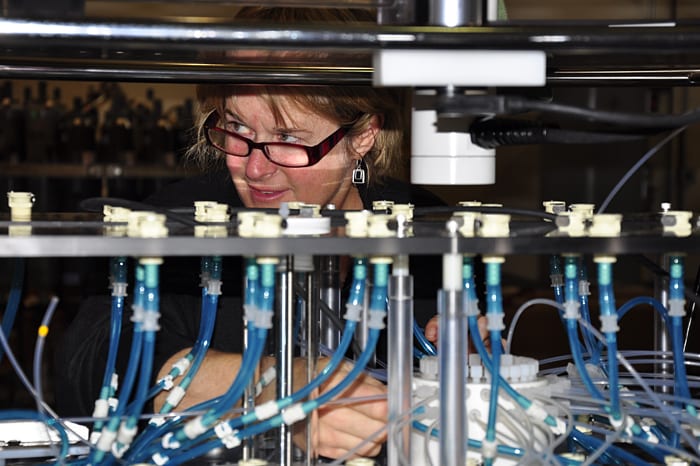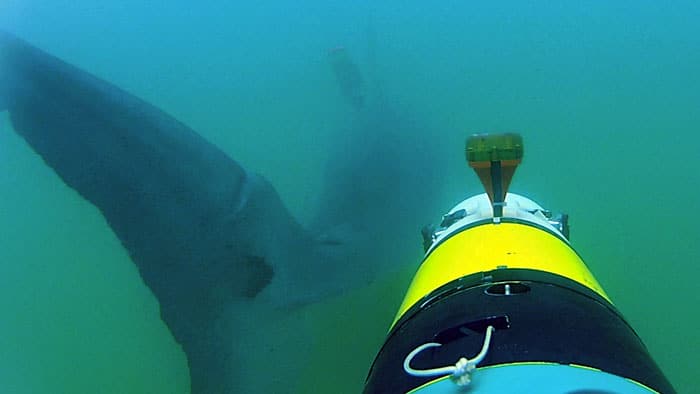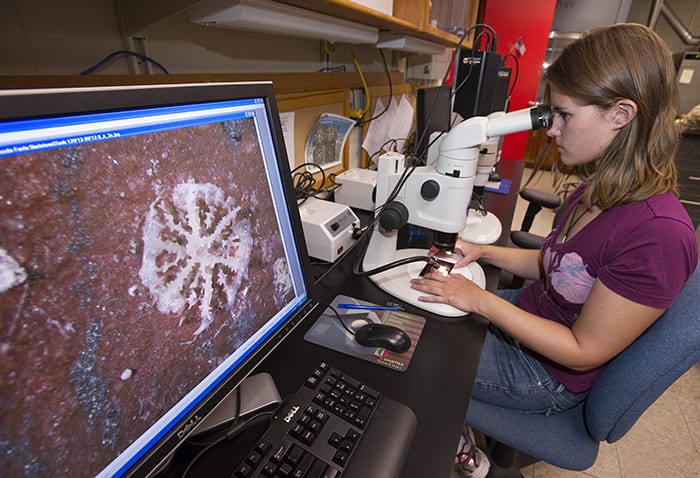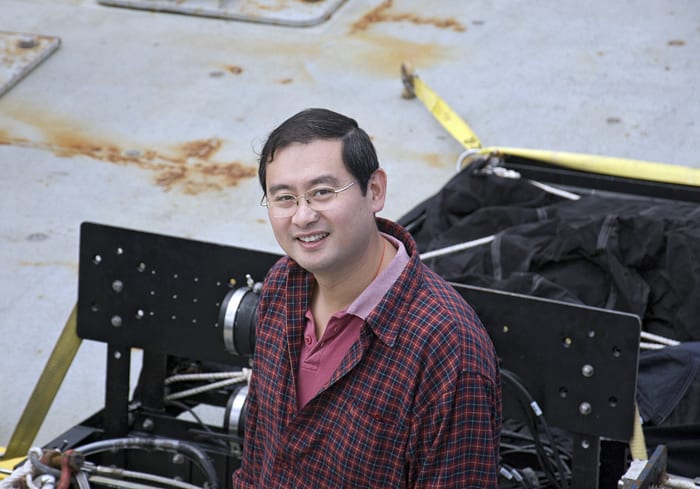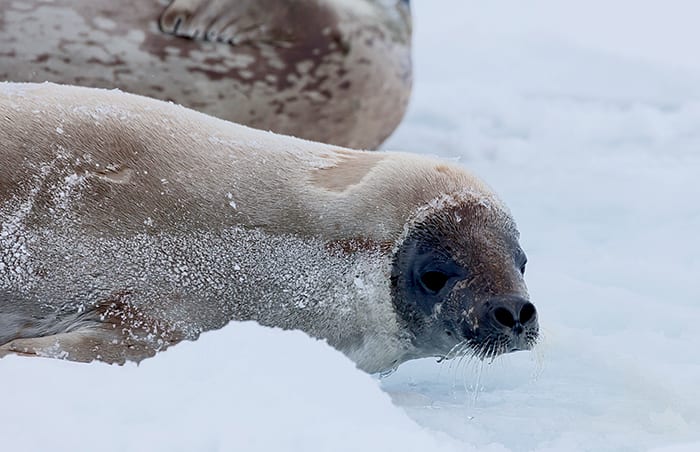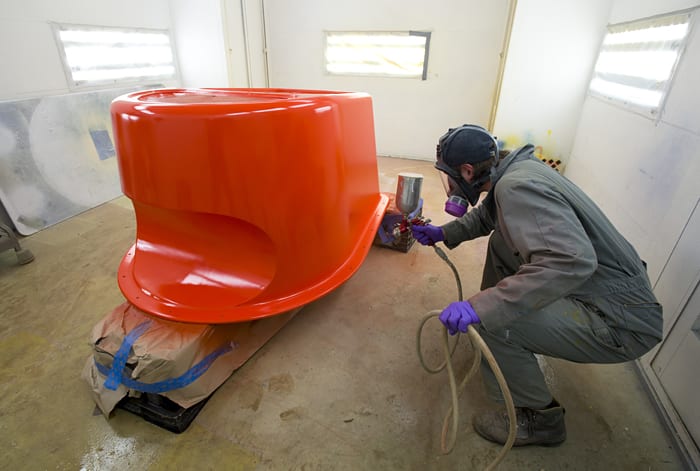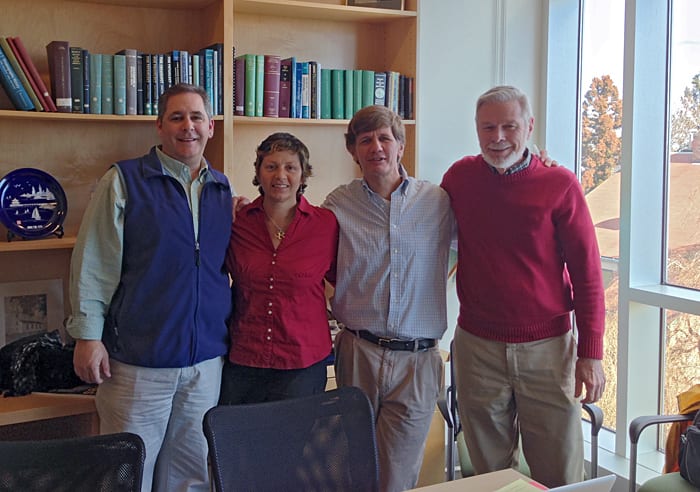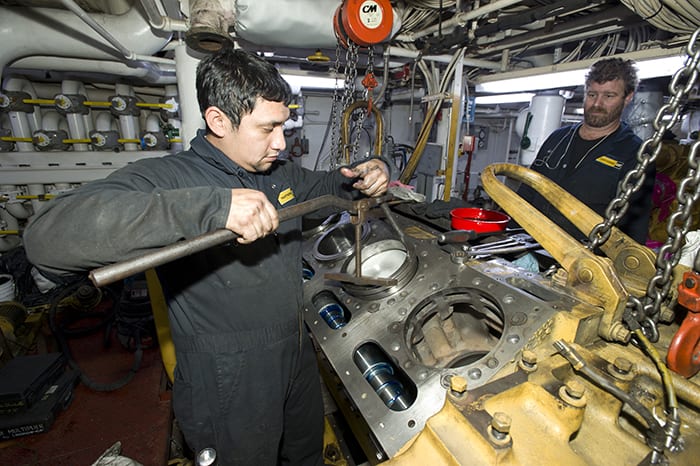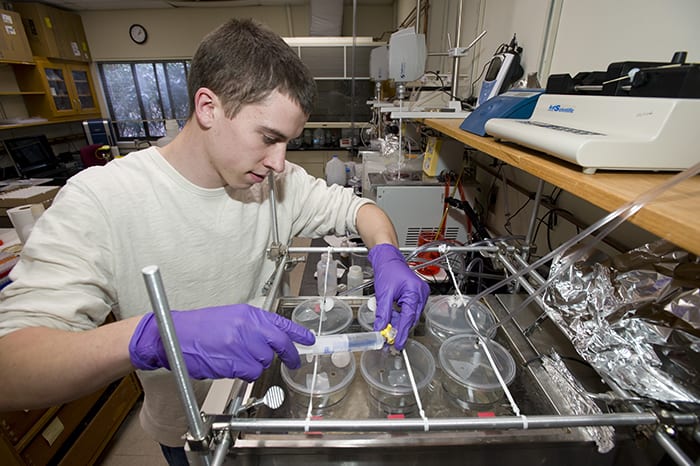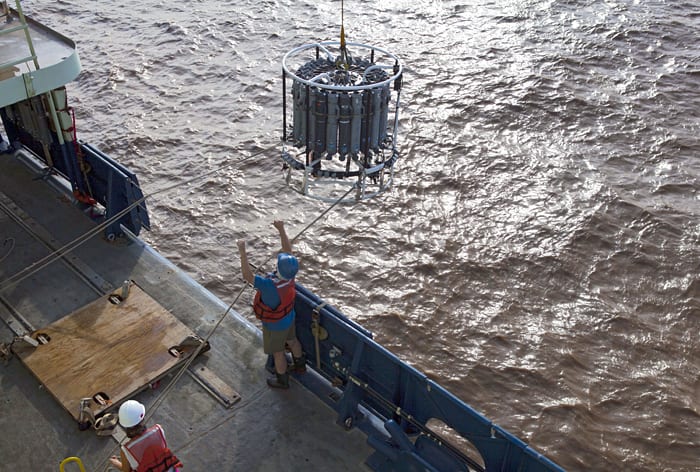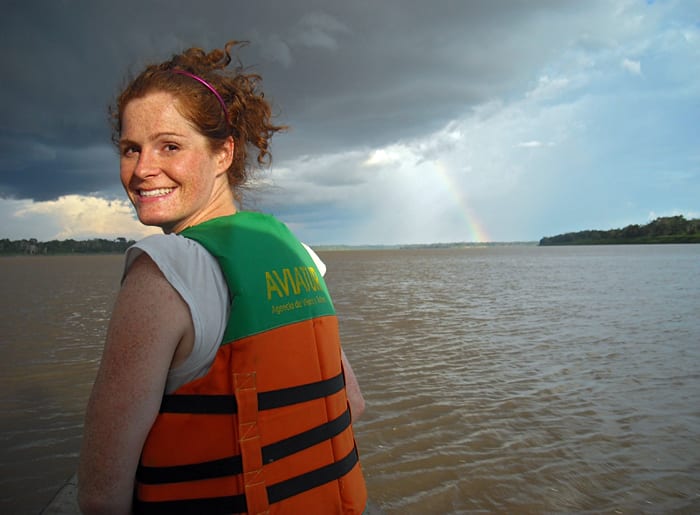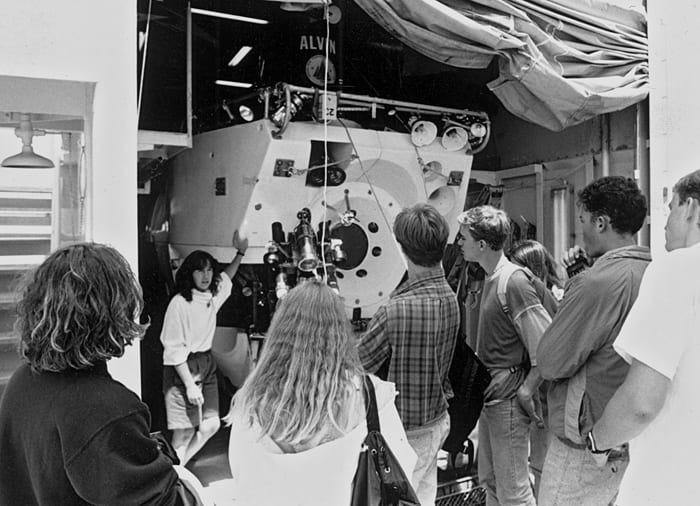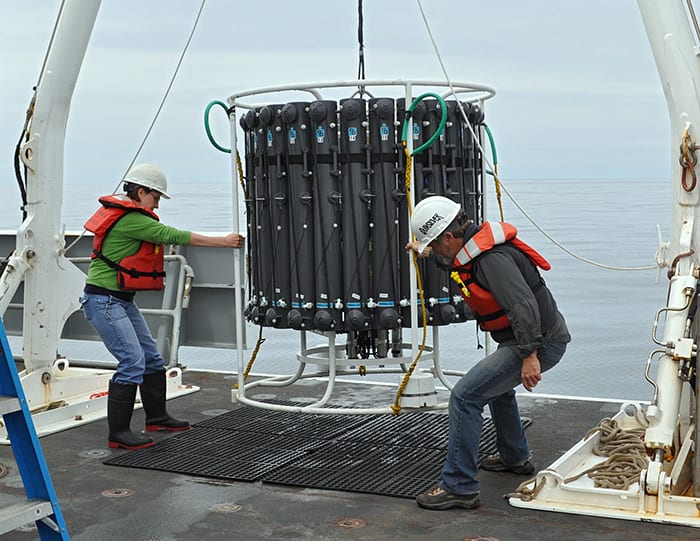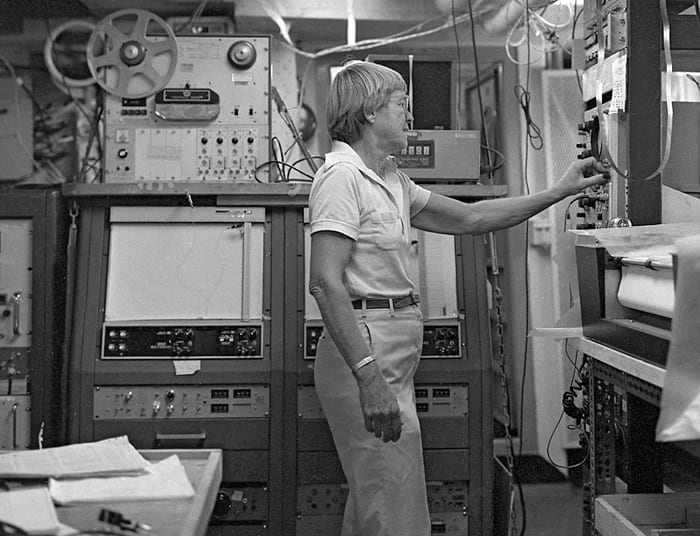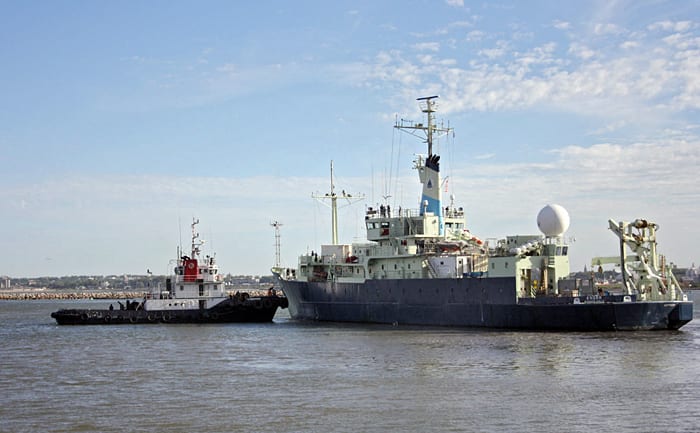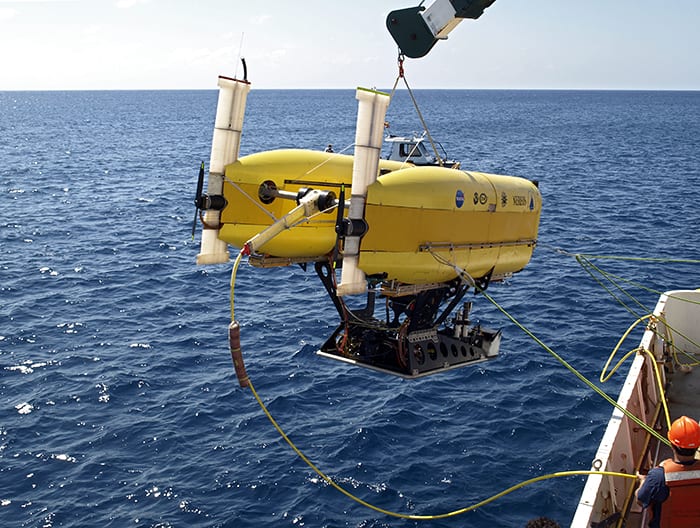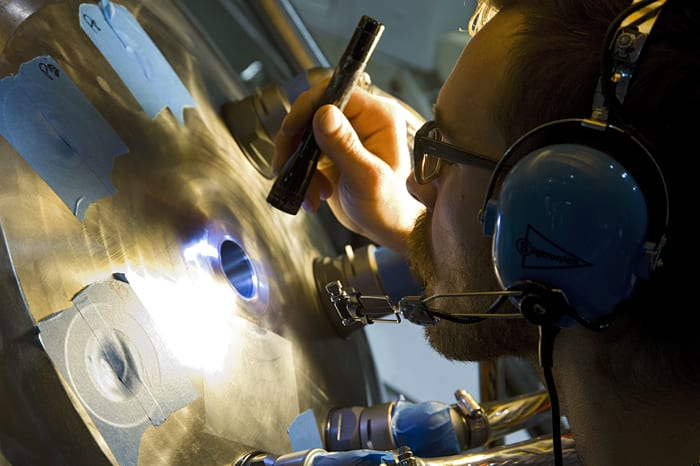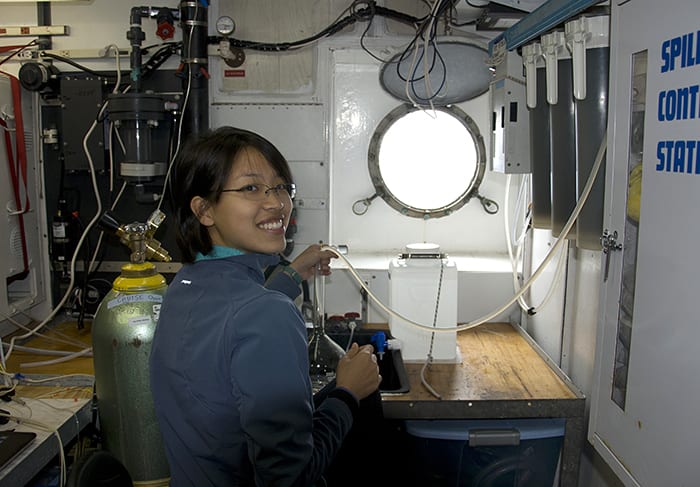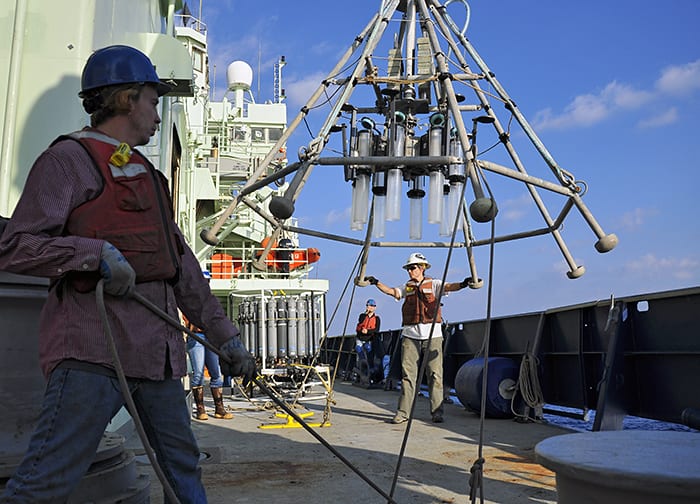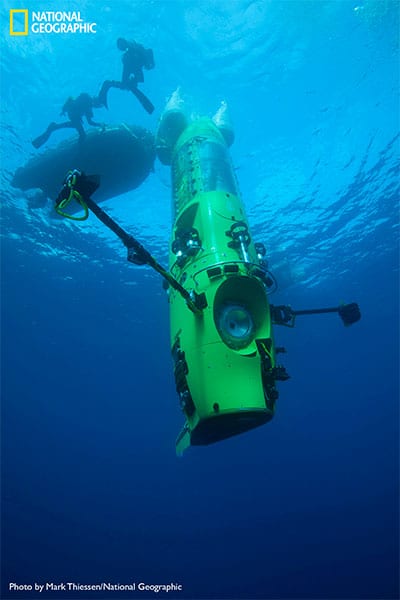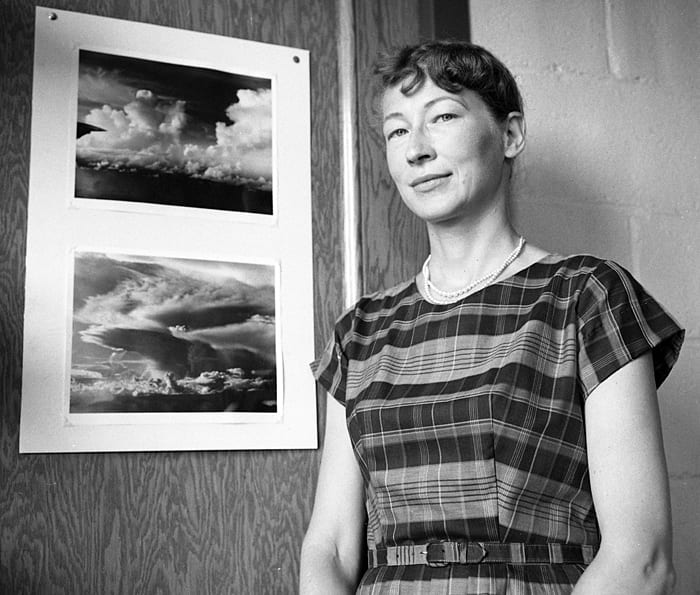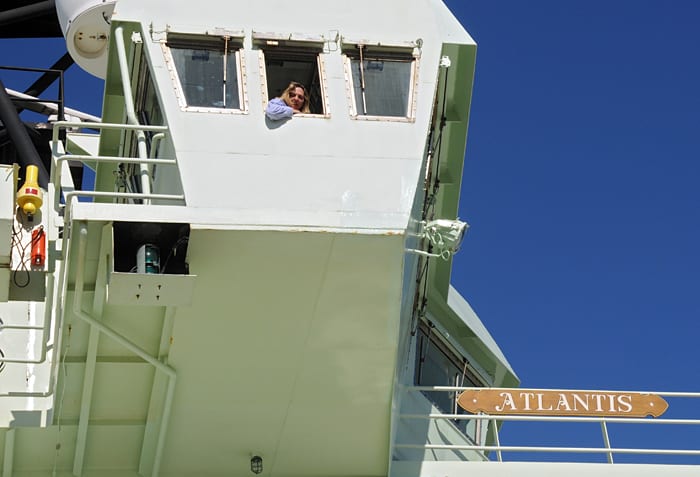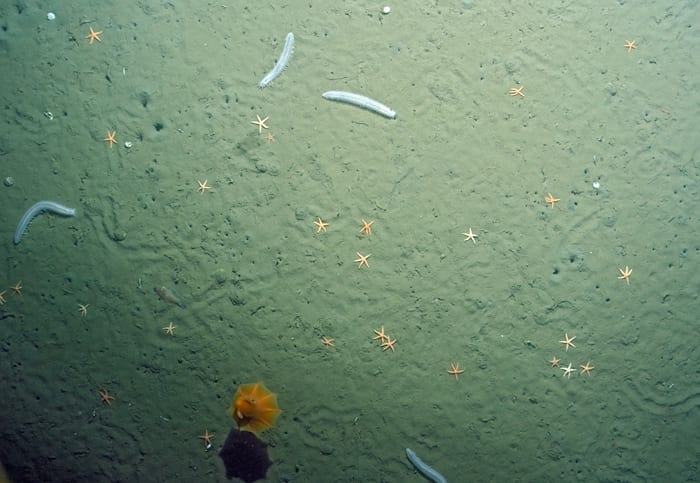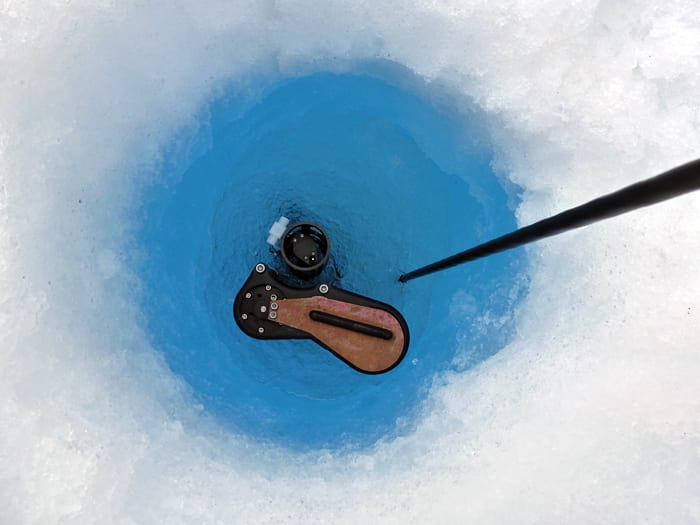Multimedia Items
Protist Pro
WHOI microbiologist Virginia Edgcomb works on the Submersible Incubation Device (SID), a robotic instrument designed to collect, incubate, and preserve samples of microbes in the ocean. Scientist Craig Taylor and…
Read MoreREMUS SharkCam: The Hunter and the Hunted
In 2013, a team from the Woods Hole Oceanographic Institution took a specially equipped REMUS “SharkCam” underwater vehicle to Guadalupe Island in Mexico to film great white sharks in the…
Read MoreEyes on Coral
MIT-WHOI Joint Program student Elizabeth Drenkard examines skeletons grown by 3-week old corals in a culture experiment conducted at the Bermuda Institute of Ocean Sciences. Drenkard is working with WHOI…
Read MoreChemical Reactions
Coastal ocean acidification occurs when excess carbon dioxide (CO2) is absorbed by, flushed into or generated in coastal waters, setting off a chain of chemical reactions that lowers the water’s…
Read MoreBreak Time
Seals like this one photographed during the Sea Ice Physics and Ecosystem Experiment (SIPEX-II) in Antarctica, depend on sea ice to survive. They hunt for food, such as fish and krill, under…
Read MoreA Perfect Coat
WHOI engineering assistant Ben Pietro puts the third and final coat of paint on the “sail” of Alvin, the country’s only deep-diving human occupied vehicle. When it is in position…
Read MoreFour Generations
For the past 35 years, the responsibility of scheduling the comings and goings of WHOI’s research vessels has fallen to four intrepid people (from left): Eric Benway, Liz Caporelli, Jon Alberts,…
Read MoreAnd Check the Oil
In February, mechanics Monir Garcia (left) and Allen Bell (right) from Hawthorne Caterpillar came to Woods Hole to complete a major overhaul of R/V Atlantis‘s engines. The ship’s engines go…
Read MoreCoral Integrity
MIT-WHOI Joint Program student Thomas DeCarlo removes a sub-sample of seawater for analysis during a calcium carbonate precipitation experiment in Glenn Gaetani’s laboratory. Thomas is growing a particular form of…
Read MoreRiver in the Ocean
Shipboard Scientific Services Group (SSSG) technician Robert Laird directs the launching of a CTD rosette aboard R/V Atlantis in 2012 during a cruise led by Patricia Yager of the University…
Read MoreArt and Science
MIT-WHOI Joint Program student Jill McDermott processes samples from hydrothermal vents on the Mid-Cayman Rise on the Caribbean seafloor during an expedition in 2012. Discovered in 2009, some of these…
Read MoreDriver and Passenger
In the early 1990s, marine biologist Cindy Van Dover began piloting the deep-submergence vehicle Alvin in the Atlantic and Pacific oceans, eventually completing 48 dives to nearly all known hydrothermal vent…
Read MoreWomen’s History Month at WHOI
Chief Scientists WHOI chemist Elizabeth Kujawinski, shown at left recovering a CTD rosette to the deck of R/V Thomas G. Thompson, departed Montevideo, Uruguay, aboard R/V Knorr on March 25,…
Read MoreWomen’s History Month at WHOI
Chief Scientists Elizabeth “Betty” Bunce was one of the first female oceanographers and the first woman to serve as chief scientist aboard a WHOI research vessel. Her colleagues remember her…
Read MoreA Long Journey Begins
On Tuesday, a tugboat nudged the research vessel Knorr out of Montevideo, Uruguay, to start a 45-day expedition. WHOI marine chemist Liz Kujawinski and colleagues will study the role of dissolved organic matter (DOM)…
Read MoreGoing Deep
The hybrid remotely operated vehicle (HROV) Nereus can be operated as a conventional, tethered underwater vehicle—though the tether is a fiber optic line as thin as a human hair—or as…
Read MoreAll Clear
Technician Jefferson Grau peers through a hole in the new personnel sphere of the submersible Alvin, which is currently going through an extensive rebuild. The hole is one of 16…
Read MoreArt Meets Acidification
MIT-WHOI Joint Program student Sophie Chu studies changes in the ocean caused by ocean acidification, which strips seawater of the chemical building blocks that corals, clams, and other marine organisms…
Read MoreGentle Lift-off
Coring technician Ellen Roosen (white hat) steadies a multicore while ordinary seaman Richard Barnes assists as the instrument is lifted off the deck of R/V Atlantis in preparation for deployment.…
Read MoreDEEPSEA CHALLENGER
Women’s History Month at WHOI
TrailblazersJoanne Malkus was the first female meteorologist to earn a doctorate, discovered what keeps hurricanes moving forward, and revealed what drives the atmospheric currents in the tropics. As a research…
Read MoreWomen’s History Month at WHOI
TrailblazersAt 14, Mitzi Crane fell in love with Jacques Cousteau, which inspired her to study marine biology and French in college. After several years in banking, a well-timed seminar in…
Read MoreReady for a Closeup
A camera attached to the bottom of a multicore caught this view of seafloor organisms and a pink dumbo octopus right before the instrument reached the bottom. A multicore drives…
Read MoreGoing, Going, Gone
An ice-tethered profiler (ITP) takes one last look at the sky before passing through four meters of ice in the Beaufort Sea to begin a study of ocean physics, biology,…
Read More
